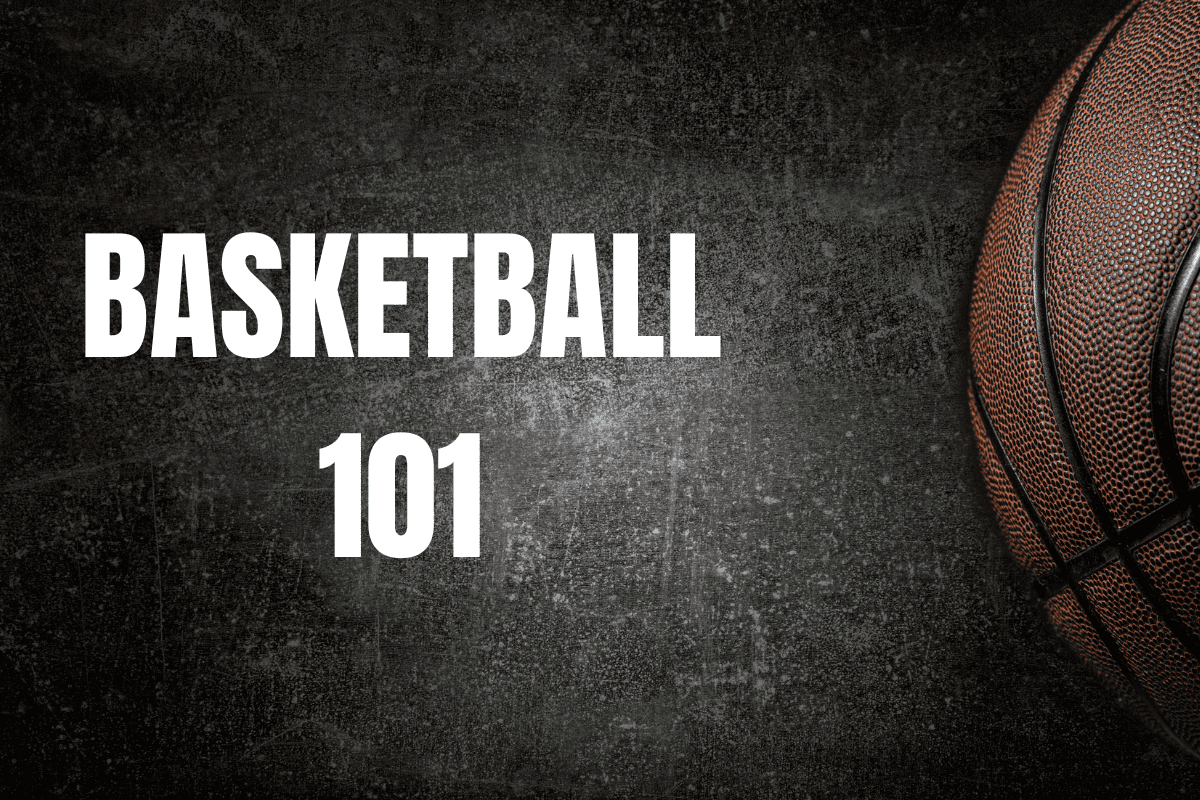Beginner’s Complete Guide to the Basketball Basics
Basketball isn’t just a sport; it’s a pulsating spectacle of skill, strategy, and spirit that captivates millions worldwide. As a new fan, delving into the world of basketball is an exhilarating journey, rich with dynamic plays and heart-stopping moments.
This guide is your front-row ticket to understanding the basics of basketball, from the court’s layout to the game’s essential rules. Whether you’re watching from the bleachers or your living room, this beginner’s guide will enhance your appreciation and enjoyment of every dribble, dunk, and dramatic play.
The Basketball Court Unveiled

Imagine the basketball court as a stage where athletes perform breathtaking feats of athleticism. This rectangular area, usually hardwood, is where all the action happens. It’s divided into two main sections: the frontcourt (where the team with the ball plays offense) and the backcourt (behind the midcourt line, primarily for defensive maneuvers).
At the heart of the court is the midcourt line, which divides it into two equal halves. Each half features a hoop and a backboard, the primary targets in the game. The three-point arc, an important area for scoring from a distance, surrounds the hoop. Closer to the hoop is the paint or key, a marked area that’s pivotal for both offensive and defensive strategies.
The free-throw line is another crucial element, located at the top of the paint. It’s where players take unopposed shots following certain fouls, a vital scoring opportunity in close games. Understanding these areas and their strategic importance is key to appreciating the game’s flow and the tactics employed by teams.
The sidelines and baselines form the court’s boundaries, with players weaving in and out of these lines to maneuver the ball and outsmart their opponents. The intersection of strategy, skill, and spatial awareness on this court creates a captivating dance that’s both complex and thrilling to watch.
Decoding the Basic Rules
Basketball, at its core, is about scoring points by shooting the ball through the opponent’s hoop while preventing them from doing the same. A standard game is divided into four quarters, each lasting 12 minutes in professional leagues. If the score is tied at the end of the fourth quarter, the game goes into overtime, an additional period to determine the winner.
Scoring is straightforward: a shot made from outside the three-point line earns three points, inside the line is worth two, and each free throw is one point. The game’s pace is regulated by rules like the shot clock, a timer that limits how long a team can attempt to score.
Fouls are a critical part of the game, penalizing players for illegal plays like excessive physical contact. A player who accumulates too many fouls is disqualified from the game. Technical and flagrant fouls, often for unsportsmanlike conduct, carry stiffer penalties.
Understanding these rules helps new fans appreciate the strategy and skill involved in basketball, transforming it from a mere spectacle of athleticism into a nuanced and thrilling contest.
The Essentials of Basketball Strategy

Basketball is a chess match, with players and coaches constantly adapting strategies to outplay their opponents. Offensively, teams use plays like the pick and roll, where a player sets a screen (block) for a teammate with the ball and then moves towards the basket for a pass. Fast breaks, quick offensive plays following a defensive rebound, are thrilling and can swiftly change the game’s momentum.
Defensively, teams choose between man-to-man, where each player guards a specific opponent, or zone defense, where each player covers a specific area of the court. A full-court press, where the defense aggressively challenges the offense across the entire court, is used to force turnovers and disrupt the opponent’s rhythm.
These strategies, executed with precision and teamwork, make basketball not just a test of physical prowess but also of mental acuity and tactical planning.
Read More:
Player Roles and Positions Explained
In the game of basketball, each player on the court plays a crucial role, defined by their position: point guard, shooting guard, small forward, power forward, and center.
- Point Guard (PG): Often referred to as the “floor general,” the point guard is the team’s primary ball handler and playmaker. They are responsible for orchestrating the offense, setting up plays, and ensuring the ball gets to the right player at the right time. Think of them as the team’s strategist, always looking to create scoring opportunities.
- Shooting Guard (SG): The shooting guard is typically one of the team’s primary scorers. Renowned for their shooting ability, especially from long distance, they are also adept at driving to the basket and scoring. Beyond scoring, shooting guards often take on defensive responsibilities, using their agility and speed to challenge opponents.
- Small Forward (SF): The small forward is the all-rounder on the team, balancing offensive and defensive duties. They are versatile players who can shoot, dribble, and defend. Small forwards are often key players in both scoring and rebounding, providing support wherever the team needs it most.
- Power Forward (PF): Power forwards are known for their strength and play near the basket. They are pivotal in rebounding and inside scoring. On defense, they play a crucial role in blocking shots and preventing opponents from scoring in the paint.
- Center (C): The center is usually the tallest player on the team, playing a vital role in defense by guarding the basket against opposing players. Offensively, they use their height and size to score close to the basket, often through rebounds and block shots.
Understanding these positions helps fans appreciate the diversity of skills and strategies employed on the court, showcasing the complexity and beauty of the game.
The Culture and Community of Basketball
The excitement of basketball extends beyond the physical game to the community that surrounds it. Each team, whether a local high school squad or a professional NBA franchise, often has a dedicated fan base. These fans celebrate their teams’ victories, agonize over their defeats, and follow their players’ careers with fervor.
The culture of basketball also thrives in informal settings. Pickup games in local parks and community centers are where grassroots talent is nurtured and the love for the game is kindled. Here, players of all ages and backgrounds come together, sharing in the joy and camaraderie of basketball.
Moreover, basketball has a significant presence in popular culture, influencing music, fashion, and entertainment. From hip-hop artists referencing basketball legends in their lyrics to movies and TV shows centered around the sport, basketball’s imprint on society is undeniable.
For new fans, delving into this rich cultural tapestry can be as rewarding as watching the games themselves. It’s a world where stories of triumph, resilience, and community spirit abound, offering a deeper connection to the sport.
Conclusion
As a new fan, understanding the basics of basketball – its rules, strategies, player roles, and the culture surrounding it – provides a foundation to fully appreciate the game. Basketball is a sport that combines athletic prowess with strategic thinking, all set against a backdrop of a passionate community.
Whether you’re watching a high-energy professional game or a spirited local match, the knowledge of these fundamentals enriches the experience, turning each game into a story with its own drama, heroes, and moments of magic.

